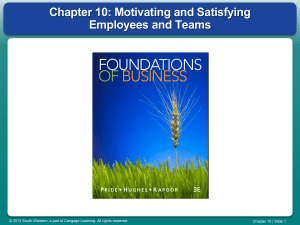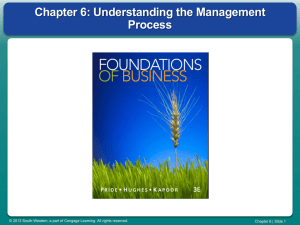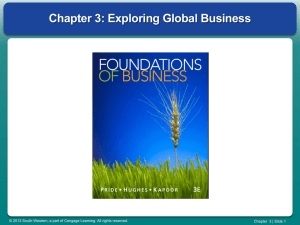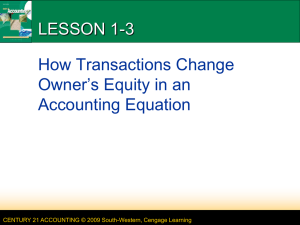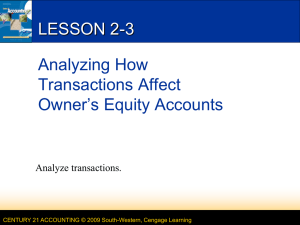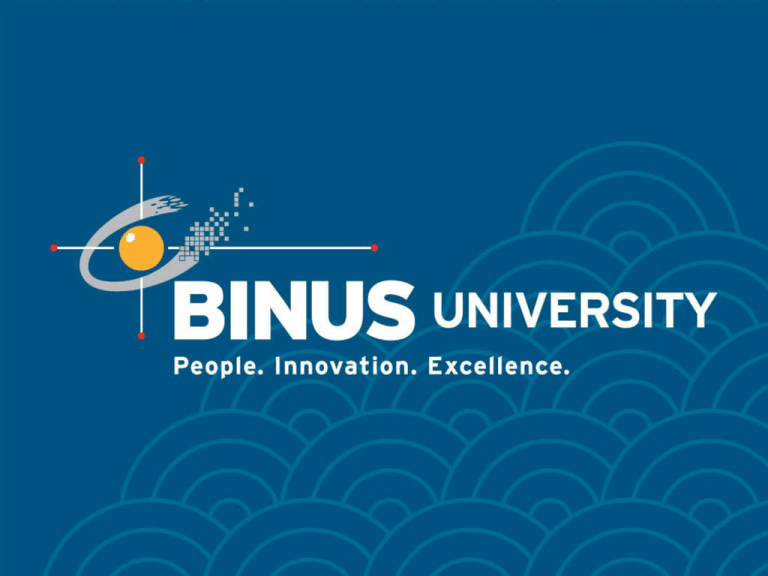
Matakuliah
Tahun
: J0124 – Manajemen Sumber Daya Manusia
: 2010
Internal Employee Relation
22
Learning Outcomes
After studying this chapter, the students should be
able to :
• Define internal employee relation
• Explain the concept of employment-at-will, wrongful discharge &
disciplinary action
Bina Nusantara University
3
Employee Rights and Privacy
• Employer Responsibilities
Negligence
Is the failure to use a reasonable amount of care when such
failure results in injury to another person.
Negligent hiring
Is a legal doctrine that places liability (duty of care) on the
employer for actions of its employees during the course and
scope of their employment.
• Job Protection Rights
Psychological contract
Is the expectation of a fair exchange of employment
obligations between an employee and employer
© 2010 South-Western, a part of Cengage Learning. All rights reserved
Job Protection Rights: Legal Considerations
Employment-at-Will
Principle
Explicit
Contract
Implied
Contract
Constructive
Discharge
© 2010 South-Western, a part of Cengage Learning. All rights reserved
Plant Closing
Notification
Employee Rights and Privacy
• Employment-at-Will Principle
The right of an employer to fire an employee
without giving a reason and the right of an
employee to quit when he or she chooses.
In 1908, Supreme Court upheld employment-at-will
in Adair v United States.
• Limitations on Employment-at-Will
Union collective bargaining agreements
Federal and state laws, court decisions, and
administrative rulings
“Fear of firing”
© 2010 South-Western, a part of Cengage Learning. All rights reserved
Wrongful Discharge: Exceptions to the
Employment-at-Will Doctrine
• Violations of Public Policy
Wrongful discharge of an employee by an employer
for refusal commit an act that to violates the law.
• Implied Contract
Wrongful discharge contrary to an employer’s oral
or written promises of continued employment.
• Implied Covenant
Wrongful discharge for a lack of fair dealing on part
of employer.
© 2010 South-Western, a part of Cengage Learning. All rights reserved
FIGURE
13.1
Discharges That Violate Public Policy
An employer may not terminate an employee for:
• Refusing to commit perjury in court on the employer’s behalf
• Cooperating with a government agency in the investigation of a charge or
giving testimony
• Refusing to violate a professional code of conduct
• Reporting Occupational Safety and Health Administration (OSHA) infractions
• Refusing to support a law or a political candidate favored by the employer
• “Whistle-blowing,” or reporting illegal conduct by the employer
• Informing a customer that the employer has stolen property from the
customer
• Complying with summons to jury duty
© 2010 South-Western, a part of Cengage Learning. All rights reserved
Privacy Rights
Employee Privacy versus Employer Obligations
•
•
•
•
•
•
Substance Abuse and Drug Testing
Searches and Monitoring
Access to Personnel Files
E-mail and Voice Mail
Conduct Outside the Workplace
Genetic Testing
© 2010 South-Western, a part of Cengage Learning. All rights reserved
Employee Privacy Issues
• Employee Conduct outside the Workplace
Organizations that discipline employees for off-duty
misconduct must establish a clear relationship
between the misconduct and its negative effect on
other employees or the organization.
• Genetic Testing
Can identify an individual’s risk of developing
common disorders such as cancer, heart disease, or
diabetes.
Likely violates Title VII of the Civil Rights Act and
the Americans with Disabilities Act.
© 2010 South-Western, a part of Cengage Learning. All rights reserved
FIGURE
13.7
A Disciplinary Model
© 2010 South-Western, a part of Cengage Learning. All rights reserved
FIGURE
13.8
Common Disciplinary Problems
© 2010 South-Western, a part of Cengage Learning. All rights reserved
Discipline
• Definitions of Discipline
Treatment that punishes.
Orderly behavior in an
organizational setting.
Training that molds and
strengthens desirable
conduct or corrects
undesirable conduct and
develops self-control.
© 2010 South-Western, a part of Cengage Learning. All rights reserved
The Investigative Interview
• Conduct of an Interview
Concentrate on how the offense violated the
performance and behavior standards of the job.
Avoid getting into personalities or areas unrelated
to job performance.
Give the employee must be given a full opportunity
to explain his or her side of the issue.
• NLRB v Weingarten,Inc.
The Supreme Court upheld an NLRB ruling in favor
of the employee’s right to representation during an
investigative interview in a unionized organization.
© 2010 South-Western, a part of Cengage Learning. All rights reserved
Approaches to Discipline
• Progressive Discipline
When applying corrective measures by increasing
degrees, always be sure that employees:
Know where they stand regarding offenses.
Know what improvement is expected of them.
Understand what happens next if improvement is not made.
• Positive, or Non-punitive, Discipline
Discipline that focuses on the early correction of
employee misconduct, with the employee taking
total responsibility for correcting the problem.
© 2010 South-Western, a part of Cengage Learning. All rights reserved
Positive Discipline Procedure
© 2010 South-Western, a part of Cengage Learning. All rights reserved
Hot Stove Rule
This disciplinary approach should have the following consequences :
• burn immediately
•Provides warning
•Gives consistent punishment
•Burn impersonally
Bina Nusantara University
17

